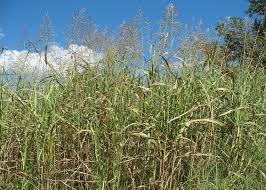Johnsongrass: Friend or Foe?
go.ncsu.edu/readext?699368
en Español / em Português
El inglés es el idioma de control de esta página. En la medida en que haya algún conflicto entre la traducción al inglés y la traducción, el inglés prevalece.
Al hacer clic en el enlace de traducción se activa un servicio de traducción gratuito para convertir la página al español. Al igual que con cualquier traducción por Internet, la conversión no es sensible al contexto y puede que no traduzca el texto en su significado original. NC State Extension no garantiza la exactitud del texto traducido. Por favor, tenga en cuenta que algunas aplicaciones y/o servicios pueden no funcionar como se espera cuando se traducen.
Português
Inglês é o idioma de controle desta página. Na medida que haja algum conflito entre o texto original em Inglês e a tradução, o Inglês prevalece.
Ao clicar no link de tradução, um serviço gratuito de tradução será ativado para converter a página para o Português. Como em qualquer tradução pela internet, a conversão não é sensivel ao contexto e pode não ocorrer a tradução para o significado orginal. O serviço de Extensão da Carolina do Norte (NC State Extension) não garante a exatidão do texto traduzido. Por favor, observe que algumas funções ou serviços podem não funcionar como esperado após a tradução.
English
English is the controlling language of this page. To the extent there is any conflict between the English text and the translation, English controls.
Clicking on the translation link activates a free translation service to convert the page to Spanish. As with any Internet translation, the conversion is not context-sensitive and may not translate the text to its original meaning. NC State Extension does not guarantee the accuracy of the translated text. Please note that some applications and/or services may not function as expected when translated.
Collapse ▲Johnsongrass. Some people love it while others seem to cringe at the thought of it springing up in a pasture or field. Johnsongrass or Sorghum halepense is a warm-season grass that originated for the Mediterranean region and was introduced to the US as a forage crop in the 1800s. It grows in every state in the US except for Minnesota.
Many people hate the grass because it is one of the most common weeds in field crops such as corn, soybeans, cotton, and sorghum. It can serve as the host for a multitude of pests that can harm corn and sorghum. These pests include nematodes, insects, and diseases.
Johnsongrass as a seedling can resemble a corn or sorghum seedling though the stems and leaves are narrower as well as being hairless. A very prominent white mid-rib is another distinguishing factor in Johnsongrass. When fully developed it can reach heights from 2.5 to 7 feet tall. Johnsongrass grows from rhizomes, which are horizontal underground stems. New shoots sprout up as these rhizomes grow and spread, which is one of the factors that lend to the aggressive growth and repopulation of this perennial.

As a forage, Johnsongrass is a winner. It has relatively high quality and yields comparably to other summer forages, such as Millet and Sudangrass. It is highly palatable prior to its reproductive stage, but quickly decreases after flower had formed. It has a crude protein percentage of 10-15 and a TDN (total digestible nutrients) percentage of 55-60. This is very comparable to the nutrient levels in Coastal Bermuda.
There are some management considerations when dealing with Johnsongrass. It can be highly susceptible to overgrazing. Animals can wipeout a stand if allowed to graze to hard. A stubble height of 6-8 inches allows for the best regrowth response. Johnsongrass, like others in the Sorghum family, has a high potential to accumulate nitrates and prussic acids. Both of these can be deadly at high levels. These both accumulate in the plant when it resumes growth after a period of stress, such as a drought or frost. Horses are not a good match for Johnsongrass due to the fact that it can result in equine cystitis.
When it comes to controlling Johnsongrass, there are a few chemical and mechanical control methods that are effective. The most effective way to control it is to simply overgraze it or continuously mowing it at love levels. This constant regrowth will drain the rhizomes of nutrient reserves and cause them to fade away. Fall plowing with a turning plow also works to expose rhizomes to the surface where temperatures are higher and the rhizomes die from excess heat. Disking with a disk harrow will only spread the grow because it spreads the rhizomes around in the soil profile without bringing them to the surface. There are certain chemical herbicides such as Glyphosate and Imazapic that will control Johnsongrass, but follow label restrictions and directions carefully.
While some love it and some hate it, Johnsongrass is prevalent here in our corner of the world and we must manage it to fit whatever your operation may be. For more information on this or any other agricultural topics, contact your local Extension office.




